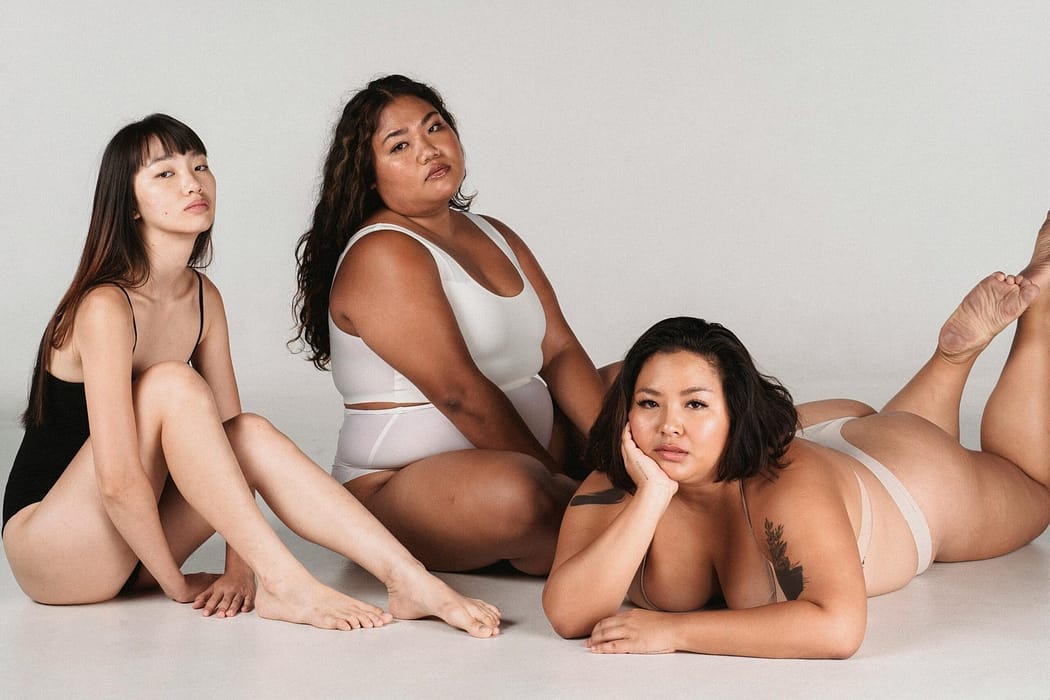Introduction
The plus-size clothing market has become one of the fastest-growing segments in the fashion industry. As body positivity and inclusivity continue to take center stage, more and more consumers are demanding stylish, comfortable, and well-fitting clothing options that cater to a range of body types. For entrepreneurs and brands looking to enter the plus-size apparel market, there is a significant opportunity to meet this rising demand.
This article explores how to build a profitable plus-size clothing brand, addressing both the hurdles and strategies for success in this expanding industry.
Understanding the Plus-Size Market
The plus-size clothing market is a rapidly growing sector, reflecting the shift towards greater inclusivity in the fashion industry. Today’s plus-size consumer base is not only larger but more diverse than ever before. With increasing awareness around body positivity and diversity, the demand for fashionable and well-fitted clothing in extended sizes has never been stronger.
Market Demographics and Size
The plus-size market, which typically refers to sizes 14 and above, is a significant portion of the global fashion industry. In many countries, the average woman’s clothing size falls within the plus-size range, which indicates a substantial and often underserved customer base. Recent studies show that the U.S. alone has over 150 million plus-size consumers, making it an industry worth billions of dollars.
In addition to sheer numbers, the plus-size demographic is diverse in terms of age, lifestyle, and personal style preferences. The market spans across different age groups, with many younger consumers seeking stylish and trendy options, while older shoppers prioritize comfort and practicality. This diversity highlights the opportunity for brands to cater to a wide range of needs and preferences.
| Metric | 2023 | 2024 | 2030 | CAGR (2024–2030) | Source |
|---|---|---|---|---|---|
| Market Size | $311.44 billion | $323.24 billion | $412.39 billion | 4.1% | Grand View Research |
| Market Size | $114.1 billion | $178.2 billion | N/A | 5.1% | GlobeNewswire |
| Market Size | $306.66 billion | $324.23 billion | $532.79 billion | 5.68% | Precedence Research |
| Market Size | $350 billion | $318.45 billion | $504.81 billion | 4.73% | Custom Market Insights |
| Market Size | $579.8 billion | N/A | $964.9 billion | 5.3% | Allied Market Research |
Consumer Behavior Trends
The modern plus-size shopper is not just looking for clothing that fits—they want clothing that reflects their personality and keeps up with the latest trends. There has been a notable shift in consumer behavior, with more shoppers demanding clothes that are both fashionable and flattering. Many plus-size consumers are increasingly moving away from the outdated notion that larger sizes equate to frumpy or unflattering designs.
Social media and influencer culture have played a pivotal role in this transformation. Platforms like Instagram and TikTok have given plus-size individuals a platform to share their style, inspiring brands to offer a wider array of stylish, on-trend options. Furthermore, many consumers are now vocal about their desire for brands to offer more inclusive sizing, leading to a rise in brand loyalty when companies genuinely embrace and understand the needs of plus-size shoppers.
Common Challenges in the Plus-Size Clothing Business
While the plus-size clothing industry presents vast opportunities, it’s not without its challenges. Brands entering this market need to navigate a series of hurdles that can impact their success. Addressing these challenges head-on is crucial for building a sustainable and profitable plus-size clothing brand.
Sizing and Fit
One of the most significant hurdles in the plus-size market is achieving a perfect fit. The wide range of body shapes within the plus-size demographic makes it difficult to create a standard sizing system that works for everyone. Plus-size shoppers often experience frustration when clothing either doesn’t fit properly or is not designed with their body type in mind. Finding a balance between inclusivity and fit requires thoughtful design and extensive testing to ensure comfort, style, and functionality for a variety of sizes.

Limited Availability of Stylish, High-Quality Options
Another challenge in the plus-size market is the lack of stylish and high-quality clothing options. Many plus-size consumers have long complained about the limited selection of trendy, well-made apparel in their size. Instead of being relegated to basic, uninspiring designs, customers are increasingly seeking clothing that reflects their individual style and meets their expectations for quality. Brands that focus on offering fashionable, durable, and well-designed pieces are more likely to earn customer loyalty and stand out in this competitive market.

Supply Chain Challenges
Managing an efficient supply chain for plus-size apparel can also be challenging. Plus-size clothing often requires specialized manufacturing processes, including larger fabric cuts and custom patterns. This can lead to higher production costs and longer lead times. Additionally, finding suppliers that can consistently deliver high-quality fabrics and meet sizing demands can be a complex task. Brands that can streamline their supply chain while maintaining high standards for quality and fit will have a competitive edge.
Effective Strategies for Building a Profitable Brand
Building a successful and profitable plus-size clothing brand requires more than just offering larger sizes. It’s about creating a brand identity that resonates with plus-size consumers, meeting their needs for both style and comfort, and fostering a sense of community and inclusivity. Below are some effective strategies that can help you stand out in the plus-size fashion market.
Emphasizing Inclusivity in Branding and Messaging
A key strategy for building a profitable plus-size clothing brand is ensuring that your brand’s messaging is rooted in inclusivity. It’s not just about offering a larger range of sizes but about celebrating diversity in body shapes and sizes. Successful plus-size brands often focus on body positivity, self-love, and empowerment, making customers feel valued and represented.
By aligning your brand messaging with these values, you can build stronger emotional connections with your audience, which can lead to greater customer loyalty. In addition to messaging, consider incorporating diversity into your marketing campaigns by featuring plus-size models and influencers in a variety of body types, ethnicities, and age groups.

Offering a Broad Size Range and Focusing on Fit
One of the biggest mistakes many brands make is limiting their size range or offering ill-fitting garments. The key to attracting and retaining plus-size consumers is offering a comprehensive size range and focusing on fit. While sizing charts are essential, you must also consider the cut, stretch, and design of each garment to cater to diverse body types.
Plus-size customers are increasingly expecting not only larger sizes but also better-designed garments that flatter their specific body shapes. Providing a broad size range that includes smaller plus sizes (12-14) and larger plus sizes (up to 30 or beyond) can help ensure that you are meeting the needs of a wide spectrum of shoppers.
| Brand | Size Range (Men/Women) | Extended Sizes (e.g., 3XL, 4XL) | Target Audience |
|---|---|---|---|
| Nike | S–XXL | 3XL, 4XL (select items) | Unisex |
| Adidas | XS–XXXL | 4XL (select items) | Unisex |
| H&M | XXS–XXL | 3XL, 4XL (select items) | Unisex |
| Uniqlo | XXS–XXL | 3XL (select items) | Unisex |
| Zara | XS–XXL | N/A | Unisex |
| ASOS | XXS–5XL | 6XL (select items) | Unisex |
| Boohoo | XS–XXL | 4XL, 5XL (select items) | Primarily Women |
| Shein | XXS–XXXL | 4XL, 5XL (select items) | Unisex |
| Everlane | XS–XL | N/A | Primarily Women |
| Levi’s | 28–40 (waist) | 42, 44 (select items) | Unisex |
Creating Stylish, Trendy Options That Appeal to a Wide Audience
Gone are the days when plus-size clothing was limited to basic, plain designs. Today’s plus-size shoppers are just as fashion-forward as their straight-size counterparts and expect stylish, trendy options that reflect their personal taste. To be successful, plus-size brands need to offer clothing that is not only size-inclusive but also aligns with the latest fashion trends.
Investing in design and trend forecasting is essential. Stay on top of fashion trends and ensure that your brand is providing modern, stylish pieces that can be worn in various settings—from work to casual wear to evening events. Consider collaborating with fashion influencers or well-known designers to create exclusive collections that excite your customer base.

Implementing Effective Marketing Strategies
Marketing plays a huge role in the success of any clothing brand, and this is especially true in the plus-size fashion market. Traditional advertising methods may not always resonate with the plus-size audience, so it’s essential to craft marketing campaigns that speak to the values of inclusivity, diversity, and body positivity.
Utilize digital platforms like social media, influencer marketing, and online advertising to create awareness and build a community around your brand. Partnering with influencers who represent a variety of body types and ethnicities can help your brand reach a wider audience and establish credibility in the plus-size market.
Financial Considerations and Profitability in the Plus-Size Clothing Market
Building a profitable plus-size clothing brand requires careful financial planning and strategy. The plus-size market has its unique set of challenges, such as higher production costs, but also offers distinct opportunities for revenue generation. Below are key financial considerations to keep in mind when entering this industry.
Understanding Production Costs
Production costs in the plus-size clothing market are typically higher compared to standard-sized apparel. Larger patterns, more fabric, and additional materials can increase manufacturing expenses. Additionally, specialized sizing and fit may require custom patterns, further adding to the cost. These factors need to be taken into account when pricing products to ensure both profitability and competitiveness.
It’s crucial to find a balance between high-quality production and cost efficiency. Brands can optimize production costs by negotiating with manufacturers, investing in technology to streamline design processes, and considering outsourcing to reduce overhead. While high production costs are an inevitable challenge, they can be mitigated with careful financial management and strategic pricing.

Pricing Strategy and Profit Margins
Pricing in the plus-size clothing market can be tricky. On the one hand, customers expect value for money, while on the other hand, higher production costs necessitate a pricing structure that supports profitability. Competitive pricing is essential, but so is ensuring your margins are sustainable.
Brands need to take into account not just the cost of production, but also other factors like shipping, marketing, and retail markups. Creating tiered pricing strategies or offering premium products at higher price points can help cater to different customer segments, while offering discounts or promotions can attract price-sensitive buyers.
Conclusion: Navigating the Future of Plus-Size Clothing
The plus-size clothing market is rich with potential for growth and innovation, and with the right strategies, brands can carve out a profitable and loyal customer base. While challenges like higher production costs and the need for inclusivity remain, they are matched by abundant opportunities for those willing to invest in customer satisfaction, product diversity, and effective marketing.
At GOPHERWOOD, we specialize in B2B manufacturing, providing high-quality, inclusive apparel that meets the needs of today’s plus-size consumers. Whether you’re a retailer or a new brand, we offer reliable, sustainable, and on-trend manufacturing solutions.






